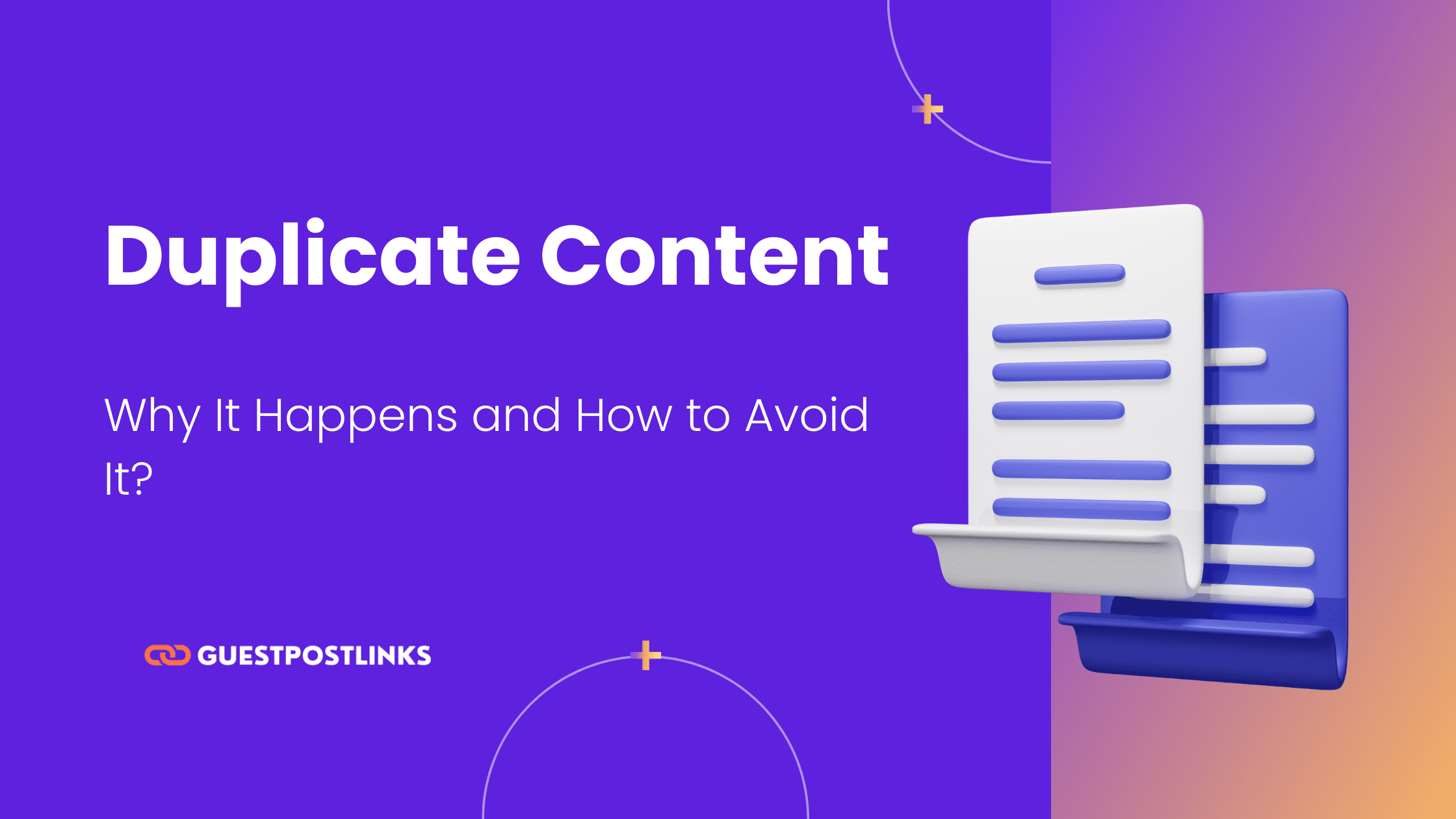Duplicate Content: Why It Happens and How to Avoid It?

Duplicate content is a prevalent issue that website owners and content creators face in the world of digital marketing. It occurs when identical or substantially similar content appears on multiple web pages or domains.
While unintentional duplication can happen, it is essential to understand the reasons behind it and take proactive measures to avoid its negative impact on search engine rankings and user experience.
In this blog, we will explore the concept of duplicate content, delve into its significance for SEO, and provide practical tips on how to steer clear of this detrimental issue.
By implementing the best practices discussed here, you can ensure your website stands out with unique, valuable content that resonates with both search engines and your audience.
What is Duplicate Content?
Duplicate content is content that exists in multiple locations on the internet, whether on the same website or different domains. It can take various forms, such as identical paragraphs, entire articles, or similar blocks of text across different pages. Search engines strive to deliver the most relevant and diverse results to users, so they tend to penalize websites with duplicate content.
Why Does Duplicate Content Matter?
For Search Engines
Search engines aim to provide users with unique and valuable content. Duplicate content can confuse search engines and hinder their ability to determine which version is the most relevant and authoritative. As a result, the search engine’s trust in your website may diminish, leading to potential ranking penalties.
For Site Owners
Duplicate content can harm site owners by diluting the visibility and authority of their pages. It can split backlinks and user engagement across multiple versions of the same content, reducing the overall impact and reach of the website. Additionally, duplicate content can create a poor user experience, leading to decreased user satisfaction and lower conversion rates.
Why is Having Duplicate Content an Issue for SEO?
Search engines prioritize delivering unique and valuable content to their users. When duplicate content is present, search engines face challenges in determining the most relevant version to display.
As a result, search engines may penalize websites by lowering their rankings or excluding them from search results altogether.
Best Practices for Duplicate Content
To avoid duplicate content issues, it is crucial to implement the following best practices:
Watch for Same Content on Different URLs
Regularly check your website for identical content accessible through multiple URLs. Use tools like Site:YourDomain.com [search term] in search engines to identify such instances.
Check Indexed Pages
Verify the number of pages indexed by search engines. If you find an unexpectedly high number of indexed pages, it could indicate duplicate content issues.
Make Sure Your Site Redirects Correctly
Ensure that your website redirects visitors from old URLs to the new URLs. Proper redirection helps consolidate link equity and avoids the presence of duplicate content.
Use 301 Redirects
When you permanently move content to a new location, implement 301 redirects. This indicates to search engines that the content has been permanently moved and helps consolidate its ranking signals.
Use the Canonical Tag
The canonical tag is an HTML element that signals the preferred version of a webpage when multiple versions exist. Implement it to guide search engines to the original and most authoritative source.
Noindex WordPress Tag or Category Pages
In WordPress, prevent indexing of tag or category pages that contain duplicate content by adding the “noindex” meta tag. This helps search engines focus on the main content.
How Do Duplicate Content Issues Happen?
Duplicate content can arise due to various reasons. Understanding these causes can help you identify and address them effectively:
URL Variations
Different versions of the same webpage, such as those with “www” or “non-www” prefixes, can cause duplicate content. Search engines might treat these variations as separate pages, resulting in duplication issues.
HTTP vs. HTTPS or WWW vs. non-WWW Pages
Mismatched protocols (HTTP vs. HTTPS) or variations in the use of “www” in URLs can create duplicate content problems. Choose one version as the preferred format and redirect accordingly.
Scraped or Copied Content
Unauthorized websites or content scrapers might duplicate your content without permission. Regularly monitor your content and take appropriate action against infringement to safeguard your site’s SEO and reputation.
Why Should You Avoid Duplicate Content?
Duplicate content should be avoided for several reasons:
- SEO Impact: Duplicate content can lead to search engine penalties and lower rankings, diminishing your website’s visibility and organic traffic.
- User Experience: Duplicate content confuses visitors and provides little value. It can negatively affect user experience, leading to increased bounce rates and decreased conversions.
- Backlink Dilution: Duplicate content splits backlinks across multiple versions, reducing the authority and link equity of your website.
How to Fix Duplicate Content Issues?
To address duplicate content problems effectively, consider the following strategies:
301 Redirect
Use a 301 redirect when permanently moving content to a new location. This ensures that search engines and users are directed to the correct URL, consolidating ranking signals.
Also Read: When Not to Use a 301 Redirect? [Avoid These Common Mistakes]
Rel=”Canonical”:
Employ the rel=”canonical” tag to indicate the preferred version of a webpage when multiple versions exist. This helps search engines understand which version to prioritize and consolidate ranking signals.
How Does Duplicate Content Impact SEO?
Duplicate content can have a negative impact on your website’s SEO in several ways:
- Ranking Penalties: Search engines may penalize websites with duplicate content by lowering their rankings or excluding them from search results.
- Lowered Visibility: Duplicate content dilutes the visibility of your website’s pages, reducing their chances of appearing prominently in search engine results.
- Backlink Dilution: Duplicate content splits backlinks across multiple versions, resulting in reduced authority and diminished link equity.
Also Read: Ultimate SEO Glossary: 499+ Essential SEO Terms You Need to Know!
Conclusion
Duplicate content poses significant challenges for both search engines and site owners. By understanding the reasons behind duplicate content and implementing effective strategies to avoid it, you can enhance your website’s visibility, authority, and user experience.
FAQs
What is an example of duplicate content?
An example of duplicate content is when the same blog post or article is published on multiple websites without proper attribution or canonicalization.
What is the problem with duplicate content?
Duplicate content causes confusion for search engines in determining the most relevant version, leading to ranking penalties and reduced visibility. It also dilutes backlinks and hampers user experience.
How much duplicate content is acceptable?
Ideally, it is recommended to have zero duplicate content on your website. However, minor instances of duplicate content, such as quotes or boilerplate text, are generally acceptable.
What is a key reason why duplicate content might cause an issue with ranking?
Duplicate content creates confusion for search engines, making it difficult for them to determine the most relevant and authoritative version of a webpage. As a result, search engines may choose not to rank duplicate content or impose penalties on websites that have it.




